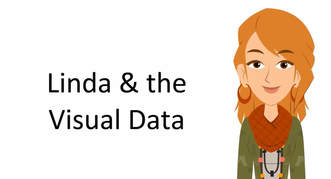|
About a year ago, we promised to dedicate a significant share of the content on this blog to data visualization. Let´s look back together how we did – and add up :-)! In January 2017, we claimed that data visualization has the potential to help us see and convey concepts and facts in a graspable and interesting way. Data that are appropriately visualized might be easier to understand and process for recipients. This in turn might contribute to better decision making in different types of organizations. At the same time, data visualization can essentially be seen as a mean of storytelling which might be driven by an underlying agenda such as catalyzing social change or raising awareness for certain topics. History of data visualization started long before the computer age – some might even see the paintings on the walls of Lascaux as the first data visualizations. In April 2017, we dived a little deeper and took a closer look at what good data visualization would actually be about and recommended some potential sources of inspiration. A highly influential thinker we can recommend in this context is Edward Tufte, an American statistician and professor emeritus of political science, statistics, and computer science at Yale University. Tufte coined the concept of graphical excellence: "Graphical excellence is that which gives to the viewer the greatest number of ideas in the shortest time with the least ink in the smallest space." This implies an attractive display of statistical information; these visualizations:
A recommendable read is Tufte's book The Visual Display of Quantitative Information. One form of data visualization we are fond of are maps – so we dedicated a blog post to it in August 2017. For visualization aficionados, the fun begins as soon as less common and to a certain extent special charts come into play. In September 2017 we took a closer look at Sankey and Chord diagrams. In our view, it is still the sound concept and user-oriented design of data visualizations that essentially make a difference. However, there are powerful tools around nowadays. What they have in common is the fact that they are on the one hand capable of integrating various different data sources and on the other hand offer various functionalities in terms of visualization, navigation and interactivity. Our latest video which you can find on the joint systems Youtube channel takes an exemplary look at Power BI from Microsoft. We will keep on visualizing and reflecting on it. Anyway, we wish you relaxing Easter holidays and a nice spring. See / hear / read you soon!
0 Comments
Leave a Reply. |
Categories
All
Archive
June 2024
|
